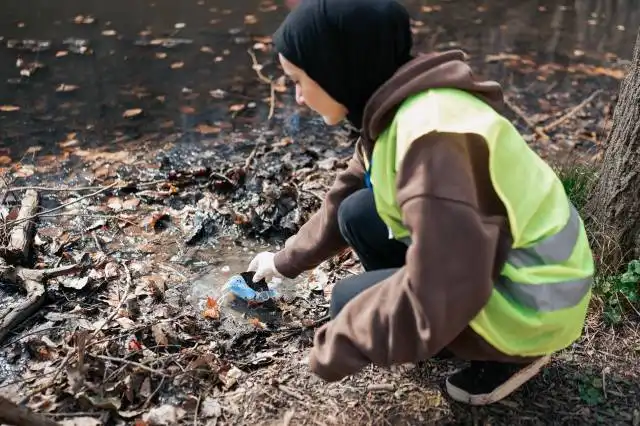Start a Cleaning Business
Unleashing the Magical Profit-Potential of a Sparkling Cleaning Business
| Updated


CLEANING BUSINESS
Starting a cleaning business might seem as simple as picking up a mop and bucket, but it's a lucrative venture that rolls out the red carpet to a world of shiny, satisfied smiles. Your tidy troupe's mission? Easy peasy lemon squeezy! You'll be sanitizing homes, offices, and everything in between, transforming chaotic mess into comforting cleanliness. So, prepare your dust busters, business hopefuls, because cleaning isn't just an action- it's profound magic that sweeps profit into your pocket!
Jump to Business Plan
RELATED BUSINESS IDEAS
Browse ALL Cleaning & Maintenance Services Business Ideas
Discover Your Perfect Domain
Unlock the door to your online success with our hand-picked selection of premium domain names. Whether you're starting a new venture or rebranding an existing one, the right domain can set the tone for your digital presence. Browse through our curated list, each with its unique potential to enhance your brand's visibility and credibility.
CLEANING MINI BUSINESS PLAN
This a quick reality check to help you identify the strengths and weaknesses of your business concept before you dive in.
Expected Percent Margin:
- Gross Margin: 30-40%
- Net Profit Margin: 10-15%
Earnings Expectations:
- Daily Earnings: $100 - $300
- Weekly Earnings: $500 - $1,500
- Monthly Earnings: $2,000 - $6,000
- Annual Earnings: $24,000 - $72,000
Actions to Hit Those Numbers:
Inventory Management:
- Initial Investment: At least $1,000-$2,000 for high-quality cleaning tools and supplies.
Marketing and Customer Acquisition:
- Website: Build a user-friendly website highlighting your services and testimonials.
- Google Advertising: Budget at least $200 - $500 a month for targeted online advertising.
Service Delivery:
- Staffing: Employ 1-2 part-time staff capable of maintaining a high-standard of cleaning.
- Quality Control: Implement regular inspections to ensure cleaning standard is met.
Cost Control:
- Supplies: Purchase cleaning supplies in bulk from a wholesale supplier.
- Transportation: Maintain a fuel-efficient vehicle for travel to client locations.
Business Operations:
- Operational Hours: Available for bookings at least 6 days a week.
- Client Volume: Aim for 2-4 residential cleanings or 1-2 commercial cleanings per day, depending on the size and condition of the location.
Keep in mind these are conservative estimations and can significantly vary depending on your geographical location, service quality, operational efficiency, clientele, etc. For exact numbers and tailored business advice, always consult a business financial advisor.
NOT WHAT YOU HAD IN MIND? Here are more ideas
Browse ALL Cleaning & Maintenance Services Business Ideas
Grab Your Business Website Name
Before you get caught up in the whirlwind of setting up your business, invest in a domain name. It's a small but significant step that lays the foundation for your brand and makes it easier for customers to find and trust you. Just like you wouldn't build a house without securing the land first, don't build a business without securing your domain name.
"Why? Can't that wait?" Here's why it shouldn't
Step 1: Determine if a Cleaning Business is Right for You
Breakdown of Startup Expenses
When starting a cleaning business, it is important to understand the startup costs associated with the venture. These costs can include the cost of supplies, such as cleaning products, mops, and vacuums, as well as the cost of any necessary licenses or permits. Additionally, the cost of any equipment, such as a vehicle, must be taken into account. It is also important to consider the cost of advertising and marketing, as well as any fees associated with setting up a business bank account.
Breakdown of Ongoing Expenses
It is also important to consider the ongoing expenses associated with running a cleaning business. These can include the cost of supplies and materials, as well as the cost of any necessary licenses or permits. Additionally, the cost of any equipment, such as a vehicle, must be taken into account. Additionally, the cost of advertising and marketing, as well as any fees associated with maintaining a business bank account, must be taken into account.
Examples of Ways to Make Money
There are a variety of ways to make money with a cleaning business. These can include charging a flat rate for services, charging an hourly rate, or offering discounts for bulk orders. Additionally, many cleaning businesses offer additional services, such as carpet cleaning, window washing, and upholstery cleaning, which can be offered for an additional fee. Additionally, some cleaning businesses offer services such as deep cleaning, which can be offered for a premium rate. Finally, many cleaning businesses offer additional services such as pet sitting, which can be offered for an additional fee.
Step 2: Name the Business
When it comes to naming a business, it's important to choose a name that reflects the company's mission and values. It should also be something that is memorable and easy to pronounce. Additionally, it's important to make sure the name is not already taken by another business. A good way to do this is to search the U.S. Patent and Trademark Office database. It's also important to consider the domain name associated with the business. If the business will have a website, it's important to make sure the domain name is available and easy to remember. Additionally, it's important to make sure the name is not too long or difficult to spell.
When choosing a name, it's also important to consider the company's target market. For example, if the company is targeting a younger demographic, it may be beneficial to choose a name that is more modern and trendy. On the other hand, if the company is targeting an older demographic, it may be beneficial to choose a name that is more traditional and conservative.
Finally, it's important to make sure the name is legally available. This means researching the name to make sure it is not already taken by another business. Additionally, it's important to make sure the name is not trademarked or copyrighted. This can be done by searching the U.S. Patent and Trademark Office database. Once the name is chosen, it's important to register the business name with the state and obtain any necessary permits or licenses.
Step 3: Create a Business Plan
Creating a business plan is an essential step in starting a cleaning business. It should include a description of the services offered, a market analysis, a financial plan, and a management plan. The description of services should include the types of cleaning services offered, the areas serviced, and the target market. The market analysis should include a description of the competition, the target market, and the pricing strategy. The financial plan should include a budget for startup costs, a budget for ongoing costs, and a budget for marketing. The management plan should include a description of the organizational structure, a description of the staffing needs, and a description of the operational processes.
Benefits of Creating a Business Plan
Creating a business plan is beneficial for a number of reasons. It can help to identify potential problems and develop solutions before they become issues. It can also help to identify potential opportunities and develop strategies to capitalize on them. Additionally, it can help to ensure that the business is properly funded and that the necessary resources are available. Finally, it can help to ensure that the business is properly organized and that the operational processes are efficient.
Step 4: Obtain Licenses and Permits
When starting a cleaning business, it is important to understand the types of licenses and permits that may be required. Depending on the state, city, and county, the types of licenses and permits needed can vary. Generally, a business license is required, as well as a sales tax permit. Depending on the type of services offered, additional permits or licenses may be necessary. For example, if the business is providing cleaning services to commercial buildings, a contractor’s license may be required. Additionally, a business license may be required for each city or county in which the business operates. It is important to research the local laws and regulations to ensure all necessary licenses and permits are obtained.
How to Obtain Licenses and Permits
Once the necessary licenses and permits have been identified, the next step is to obtain them. This process can be done online or in person. Depending on the state, city, and county, the process for obtaining the necessary licenses and permits may vary. Generally, the process includes filling out an application, paying a fee, and providing proof of insurance. Additionally, some states may require a background check or a bond to be purchased. After the application is submitted, it may take several weeks for the license or permit to be issued. It is important to research the local laws and regulations to ensure the process is followed correctly.
Step 5: Find Suppliers
Finding the right suppliers for your cleaning business is essential. It is important to research and compare prices, quality, and delivery times of different suppliers. You should also consider the reputation of the supplier and the customer service they provide. It is also important to look for suppliers that offer discounts for bulk orders. Additionally, you should look for suppliers that offer free shipping or discounts on shipping.
Create a List of Suppliers
Once you have researched and compared different suppliers, you should create a list of your top choices. This list should include the supplier’s name, contact information, product offerings, and prices. You should also include any notes about the supplier’s customer service or delivery times. Additionally, you should note any discounts or special offers that the supplier may offer.
Contact Suppliers
Once you have created a list of potential suppliers, it is time to contact them. You should reach out to each supplier and ask them any questions you may have. This is also a good time to negotiate prices and discounts. Additionally, you should ask the supplier about their delivery times and any other services they may offer.
Finalize Supplier Agreement
Once you have found the right suppliers for your business, it is time to finalize the agreement. This should include the terms of the agreement, such as the prices, delivery times, and any discounts. Additionally, you should make sure that the agreement includes any special services that the supplier may offer. Finally, you should make sure that the agreement is in writing and signed by both parties.
Step 6: Hire Employees
When it comes to hiring employees, it is important to be selective and to choose individuals who are reliable and trustworthy. It is also important to ensure that the employees have the necessary skills and experience to perform the job. Additionally, it is important to consider the cost of hiring employees, as this can be a significant expense for a small business. When hiring employees, it is important to research the local labor laws and regulations to ensure that the business is compliant with all applicable laws. Additionally, it is important to create an employee handbook that outlines the expectations and policies of the business. This handbook should include information such as the hours of operation, the job duties, the pay rate, and the benefits offered.
Training Employees
Once employees have been hired, it is important to provide them with the necessary training to ensure that they are able to perform their job duties effectively. This may include providing them with information on the products and services that the business offers, as well as providing them with safety training. Additionally, it is important to provide employees with customer service training to ensure that they are able to provide excellent customer service. It is also important to provide employees with training on the proper use of the cleaning equipment and supplies. Finally, it is important to provide employees with information on the company policies and procedures.
Step 7: Market Your Business
The seventh step in starting a cleaning business is to market your business. There are a variety of ways to market your business, including creating a website, using social media, and attending networking events. Creating a website is a great way to showcase your services and attract potential customers. You can also use social media to promote your business by creating a page and sharing posts about your services. Additionally, attending networking events can help you connect with other business owners and potential customers.
Tips for Effective Marketing
When marketing your business, it is important to be creative and consistent. You should also focus on creating content that is relevant to your target audience. Additionally, it is important to create a budget for marketing and stick to it. You should also consider using promotional materials such as flyers and business cards to help spread the word about your business. Finally, it is important to track the results of your marketing efforts to ensure that you are getting the most out of your efforts.
Step 8: Set Up Accounting
Setting up accounting for your business is an important step to ensure that you are able to properly track your income and expenses. It is important to have a system in place to help you keep track of your finances and to ensure that you are compliant with any applicable laws and regulations. Here are some tips on setting up accounting for your business:
Choose an accounting system: There are many different accounting systems available, so it is important to do your research and choose the one that best fits your needs. Consider factors such as cost, ease of use, and features when selecting an accounting system.
Set up a chart of accounts: A chart of accounts is a list of all the accounts in your accounting system. This list should include all the different types of income and expenses that you will be tracking.
Set up a system for tracking income and expenses: You will need to have a system in place for tracking all of your income and expenses. This could include setting up a spreadsheet or using software to help you track your finances.
Set up a system for paying taxes: Depending on the type of business you have, you may need to set up a system for paying taxes. This could include setting up a separate bank account for taxes or setting up a payment plan with the IRS.
Hire an accountant: If you are not comfortable setting up your own accounting system, you may want to consider hiring an accountant to help you manage your finances. An accountant can help you set up your accounting system and ensure that you are compliant with any applicable laws and regulations.
Step 9: Establish Your Rates
Establishing your rates is an important step in starting a cleaning business. Your rates will depend on the services you offer, the size of the job, and the area you are located in. It is important to research the market and find out what other cleaning businesses in your area are charging for similar services. This will help you to determine what rates you should charge. Additionally, you should consider the cost of supplies and labor when setting your rates. You should also consider the amount of time it will take to complete the job and the value of the services you are providing. Finally, you should be sure to charge enough to cover your overhead costs and make a profit.
EXPLORE MORE CATEGORIES
Browse ALL Business Idea Categories
TAKE THE NEXT STEPS











